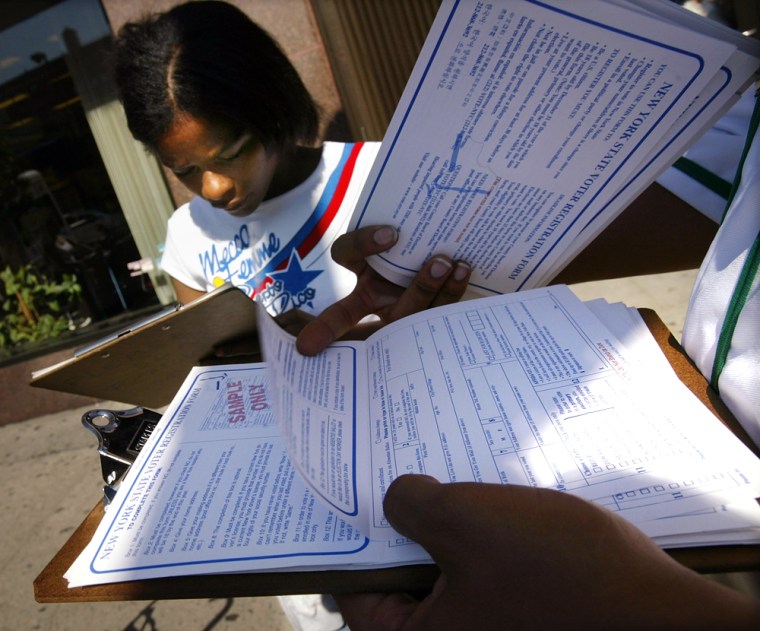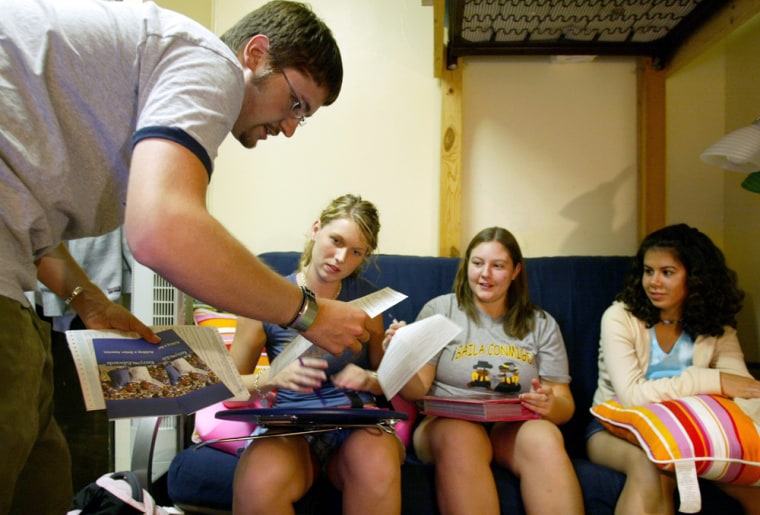It may have been a change in their sense of civic duty, or just a singular response to the nasty, red state-blue state polarities of the 2004 race, but millions more younger Americans voted in that year's presidential election than in elections past.
Activists hope to build on that momentum as they explore ways to make sure young voters return to the polls for the midterm election in 2006 and the presidential election in 2008.
Voters of Generation Y, defined as 18- to 29-year-olds, led last year's charge to the polls. The research group CIRCLE, based at the University of Maryland's School of Public Policy, found that almost 21 million Americans under 30 voted in 2004 — about 4.6 million more than in 2000.
Younger, more patriotic
To Heather Smith, a director of Young Voter Strategies, Generation Y is poised to make its mark. “Within the next decade, they'll be about 25 percent of the U.S. population,” she noted.
Smith's organization, part of the Graduate School of Political Management at George Washington University, finds that Generation Y has lately embraced more patriotic values and a greater acceptance of government authority.
“They grew up with Sept. 11 and things that increased their civic pride,” Smith said. “They’re way more trusting of government than their older brothers and sisters; they’re more likely to be engaged and to participate in the political process.”
Emily Kirby, a CIRCLE research associate, said the attacks of Sept. 11, 2001, and their aftermath were among the big differences between young Americans' reasons to vote in 2000 and four years later. “It's the war in Iraq and terrorism,” she said. “When a country's at war and young people are the ones going off to serve, that’s a pretty compelling reason to cast a vote.”
The human factor
To get to younger Americans, voter organizations are using more direct mail and — thanks to the techies who helped power Howard Dean's 2004 campaign — the Internet. But voter outreach groups also are paying more attention to a low-tech approach to contacting young people.
“Our research shows that peer-to-peer contact is the way to go, supplemented by advertising, the Internet and direct mail,” said David Rosenfeld, program director for the New Voters Project, part of State PIRGs, a network of state-based public interest research groups. “There's nothing as good as one young person asking another young person to turn out and vote.”
Rock and roll at the polls
Another strategy in 2004 targeted younger voters through music. Bands like Sleater-Kinney, Soulive and Death Cab for Cutie worked with Music for America, a group responsible for registering 20,000 voters last year and organizing 100 get-out-the-vote events across the nation the week before the election.
In the run-up to the 2004 vote, several activist groups also joined to form the 20 Million Loud campaign. Its goal: register an additional 2 million young voters, to go with the 17.6 million who voted in 2000. The campaign, led by Rock the Vote and Declare Yourself, ended up surpassing its goal by more than double, registering 4.6 million younger voters.
Education may be hot issue in ’06
“They'll continue to work together and use the same tactics, trying to reach young voters to get them engaged,” said Kirby, of CIRCLE. “It's safe to say they're all planning to work together in 2008.”

Rosenfeld said younger Americans want to hear politicians talk about issues that are relevant to them, and ventured a forecast: The hot issue for younger voters in 2006 won’t be terrorism or the war, as in years past.
“The biggest issue we’re spending time on is higher education,” he said. “There's incredible concern among young people about lower tuition and increasing the money government earmarks for grant-based programs. That will be the single biggest issue for people to get engaged on.”
And he predicted the get-out-the-vote strategy for 2006 and beyond will be much like what worked in 2004: “It’s good old-fashioned shoe leather, spending time in states where elections are closely contested and using that as an opportunity to register more voters.”
